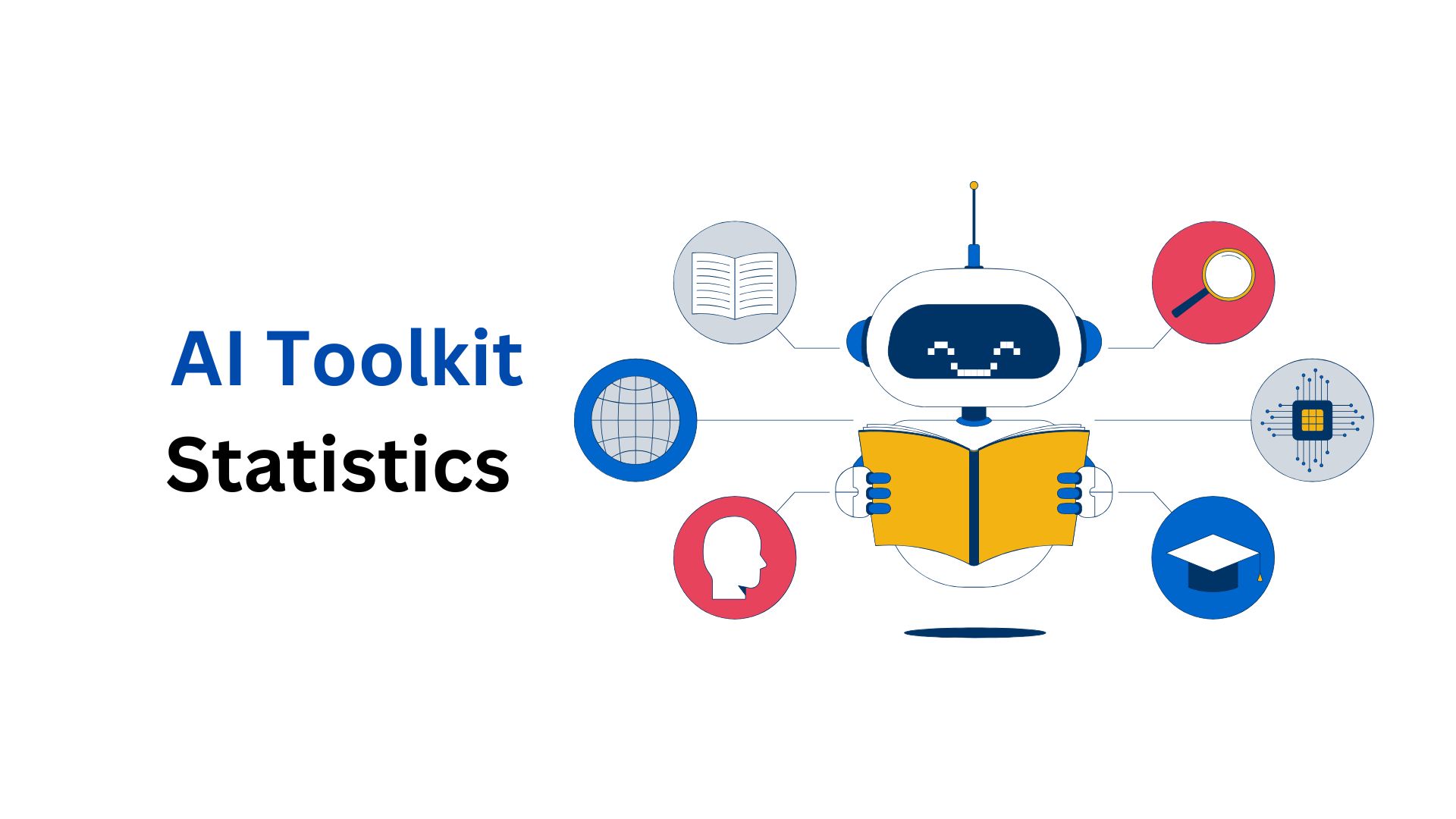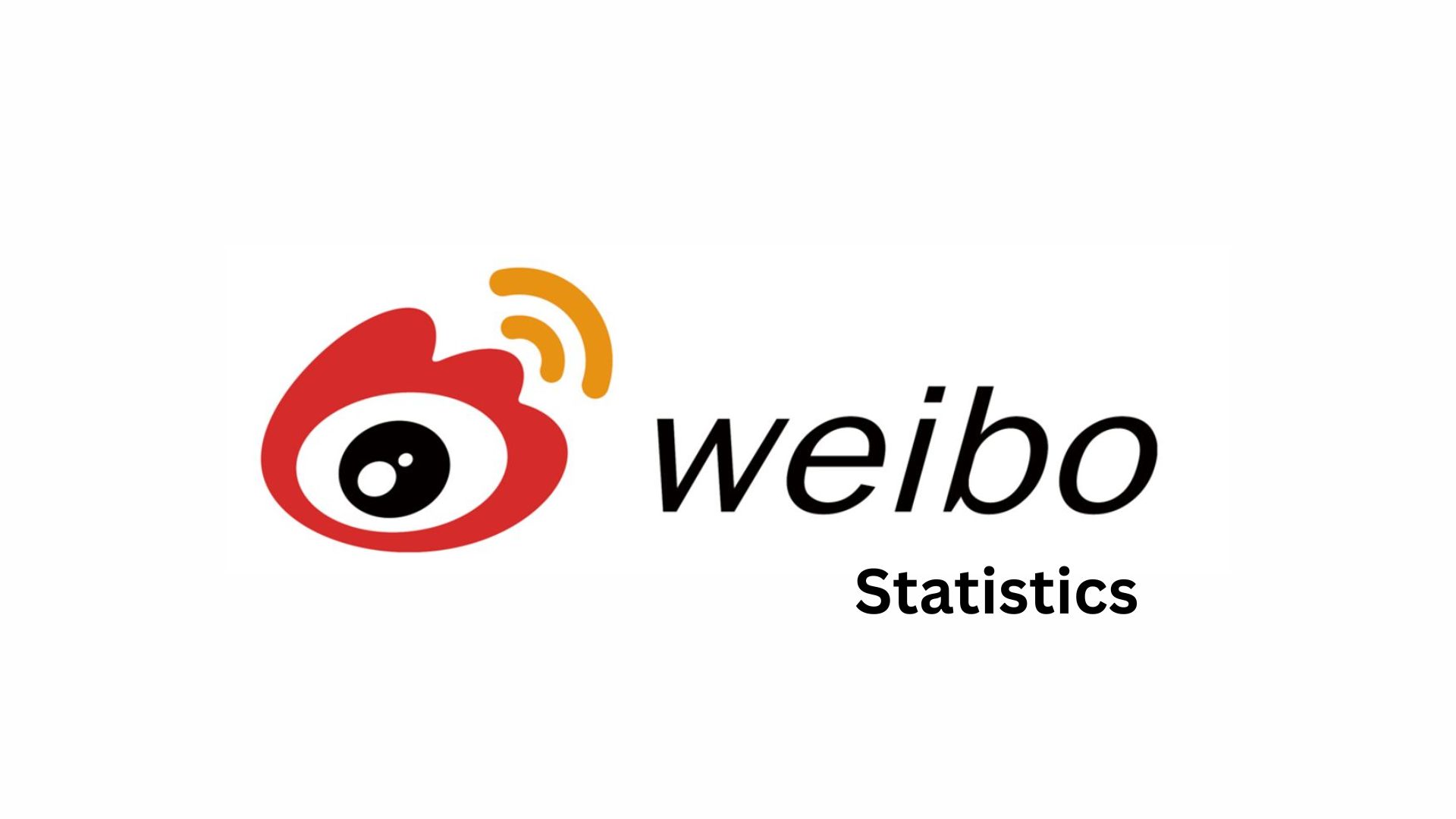Buffer vs Hootsuite Statistics By Revenue, Website Traffic And Demographics (2025)
Updated · Jun 23, 2025
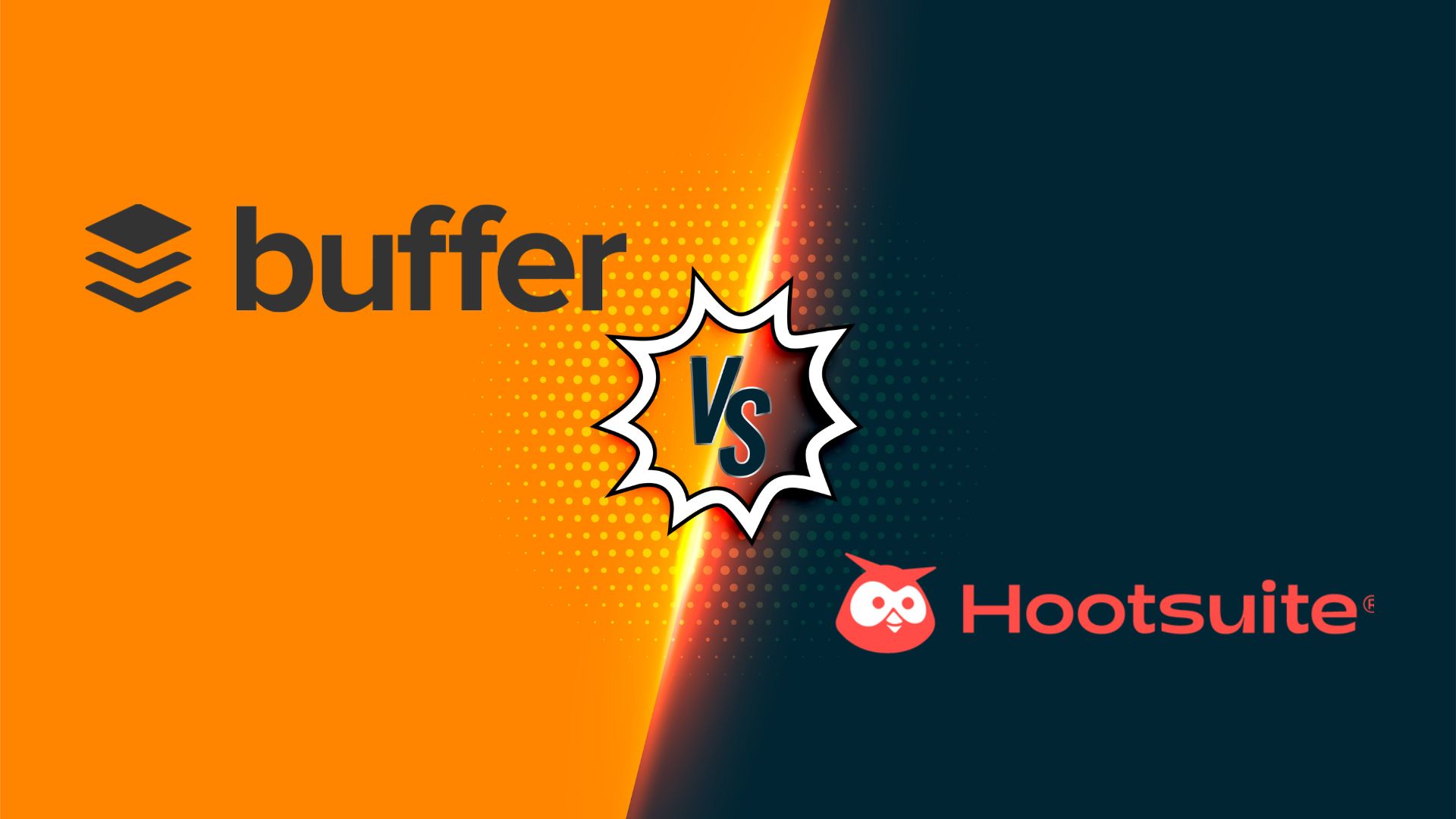
Table of Contents
Introduction
Buffer vs Hootsuite Statistics: Buffer and Hootsuite are working against each other for supremacy in scheduling, analytics, collaboration, and affordability. Buffer offers simple interfaces and transparent pricing for creators and small and medium enterprises. Hootsuite markets to larger enterprises for deep analytics, bulk management tools, and integrations comprising its internal operations.
This comprehensive Buffer vs Hootsuite statistics focuses on user growth, satisfaction, pricing, features, and ease of use, all backed by numbers and insights from various sources. So, by the end, you will have an informative and data-driven sense of what platform will suit your needs better.
Editor’s Choice
- Buffer earned US$31.1 million in 2024, with Hootsuite performing over US$350 million, reflecting a vast gap in scale between the two.
- Whereas Buffer rose gradually from US$17.6K in 2012 to US$31.1 million, Hootsuite began generating substantial revenue earlier, hitting US$3.8 million in 2009 and earnings of US$150 million between 2017 and 2019, which it doubled by the year 2024.
- Buffer adopts an affordable approach, following a simplified SaaS subscription model with pricing beginning at US$5/channel/month. In contrast, Hootsuite is focused on enterprises with packages loaded with features and higher price points.
- Buffer offers analytics as an optional product, starting at US$50/month, whereas many other platforms, like Hootsuite, tend to build their advanced features into upper-priced plans.
- Throughout May 2025, Buffer consistently out-visited Hootsuite. In the first week of May, Buffer recorded 694,633 visits while Hootsuite had 514,012 visits, and by the end of May, Buffer was at 310,934 visits as compared to Hootsuite’s 190,235.
- Sprout Social claims the enterprise market with 23,000+ customers and US$100 million in recurring revenue, while Buffer captures the small business and creator segment with more than 70,000 paying customers and a US$25 ARPU.
Buffer vs HootSuite Revenue
Buffer
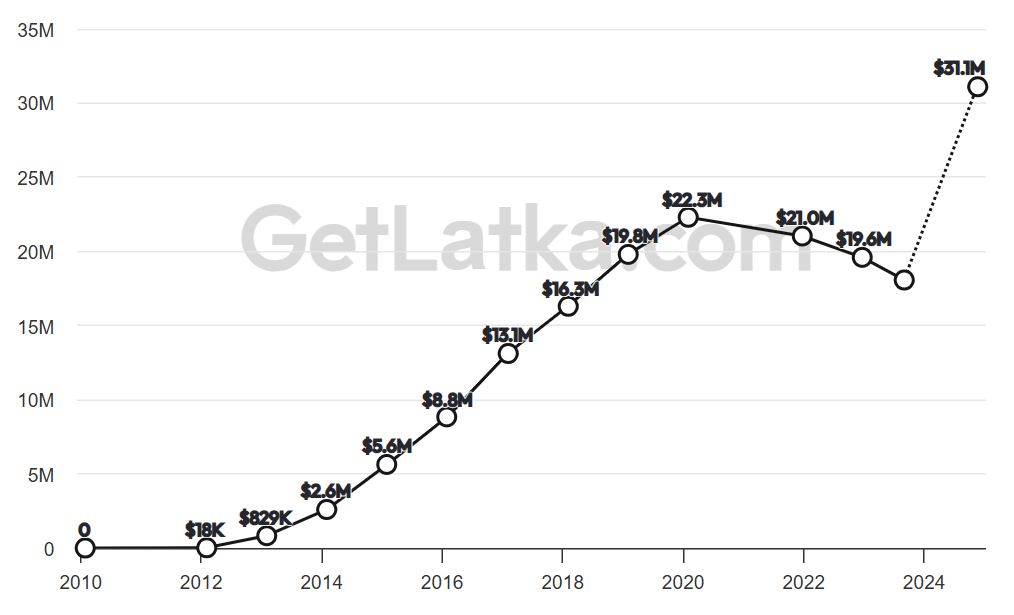
(Source: getlatka.com)
Hootsuite Revenue

(Source: getlatka.com)
- As per Getlatka, Buffer vs Hootsuite statistics reveal that the growth indicators stand out, with Hootsuite crossing an impressive US$350 million revenue mark in 2024, while Buffer’s revenue of US$31.1 million in 2024 rose from US$18.1 million in 2023. That is to say, both companies are growing, but at very different scales when it comes to finances.
- Historically, Buffer had its revenue climbing steadily from US$17.6K in 2012 to more than US$31 million by 2024, a growth trajectory that remained consistent year after year. By contrast, Hootsuite started strong in 2009 with revenues of US$3.8 million, remained steady at around the US$150-million mark from 2017 to 2019, and then experienced a meteoric rise, more than doubling past US$350 million by 2024.
- While Buffer, arguably, has evolved from a scrappy startup to a fine mid-sized firm, the revenue history portrays Hootsuite as a well-established firm, riding on enterprise demand and broader platform capabilities.
- This comparative analysis highlights that Buffer remains strong for smaller teams and creators, while Hootsuite’s monetisation and sheer scale push it well within the enterprise tier.
Buffer Business Model
- According to Sacra, unlike enterprise-focused competitors, Buffer operates with a straightforward, subscription-based SaaS model that prioritises simplicity and affordability.
- The larger companies aim to provide solutions and offerings with many features, while Buffer offers solutions that are valuable to small businesses.
- For such entities, pricing is tiered based on the number of social channels and team members involved.
- Instead of going for an aggressive sales approach, Buffer takes a product-led approach to grow, with the free plan limited to 3 social accounts, being used as an entry to upsell users into higher tiers, with Essentials at US$5/channel/month, Team US$10/channel/month, and Agency US$100 for 10 channels.
- Usually, their analytics is configured as an add-on feature under high-cost bundles.
- Buffer, in contrast, markets Buffer Analyse separately, from US$50 a month for 10 accounts to US$800 a month for 200. This way, businesses can scale the services they engage in based on actual needs as opposed to high-cost enterprise suites forcing them to.
- Buffer wants to keep that clean user experience in order to keep it somewhat accessible for podcasts and facilities that want to professionally manage social media without dealing with clunky dashboards or paying large amounts for anything they do not need.
Website Visitors
Buffer
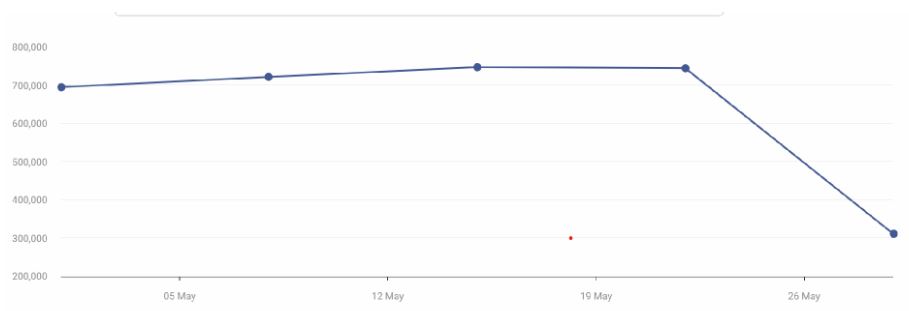
(Source: similarweb.com)
Hootsuite

(Source: similarweb.com)
- According to Similarweb, Buffer vs Hootsuite statistics state that between the 1st and 31st of May, 2025, Buffer always enjoyed more website visits through every weekly period than Hootsuite.
- Buffer had 694,633 visits from May 1 to 7 in comparison to Hootsuite’s 514,012.
- Buffer’s traffic further rose in the week of May 8 to 14 to 721,441, as against the smaller increase experienced by Hootsuite up to 538,197.
- Buffer’s traffic was still climbing with 747,035 while Hootsuite went down just slightly to 497,563 between the 15th and 21st of May.
- Buffer maintained a high level of 744,337 for the week of May 22–28 as Hootsuite climbed to 511,228. Finally, from May 29–31 (three days), Buffer beat Hootsuite yet again, with 310,934 visits versus 190,235.
- This shows that, across all the weeks which make up the whole month of May 2025, we can say that Buffer was always leading in terms of web traffic against Hootsuite.
Buffer vs Hootsuite Social Media Management Platforms
- According to the Sacra report, Buffer vs Hootsuite statistics show that Sprout Social prevails in the enterprise segment. Upon conquering its competitors, it became equipped with some 23,000 customers and over US$100 million of recurring revenue every year, boasting advanced scheduling, analytics, and customer support tools.
- In the meantime, Buffer caters to small businesses and creators by providing services to over 70,000 paying customers with a much lower ARPU of US$25.
- Somewhat less of everything, it gives price and simplicity. Sprout Social is charging US$99 per user per month to big companies such as Shopify and IBM, while Hootsuite and Later rule the mid-market districts, charging US$20-US$50 per month so small teams can schedule, publish, and track analytics.
- Buffer, once a direct competitor in this segment with its US$10 per month plan, has repositioned itself to serve independent creators and small teams. The competitive advantage of Buffer against enterprise platforms moving upmarket and mid-market tools focusing on team collaboration is its freemium model, simplicity, and a creator-centred approach.
- Newer entrants like Planoly and Preview are gaining traction in the creator economy by specialising in Instagram-focused management tools with pricing sometimes set between just US$10 and US$15 per month.
- As these social media management solutions get further segmented by the sizes of the businesses and platform specificity, tools like Sprout Social are thriving at scale and complexity, whereas Buffer is gaining from the smaller niche by being affordable, simple to use, and user-friendly.
Website Traffic By Country
Buffer
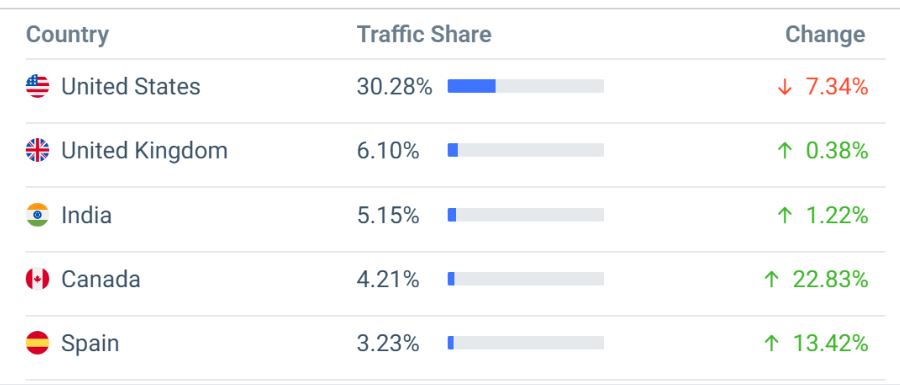
(Source: similarweb.com)
Hootsuite
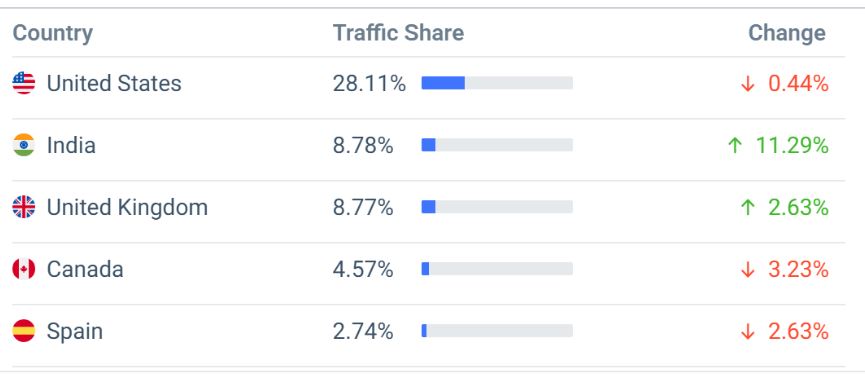
(Source: similarweb.com)
- In terms of the website traffic split, both Buffer and Hootsuite stand strong, with the largest visits coming from the United States, with a slight lead for Buffer over Hootsuite at 30.28% and 28.11%, respectively.
- However, Buffer seemed to top this list as far as a decline in U.S. traffic goes, experiencing a drop of about 7.34%, compared to Hootsuite’s mere marginal 0.44% decrease.
- Over the United Kingdom, the larger share goes to Hootsuite at 8.77% with an increase of 2.63%, whereas Buffer stands at 6.10% with a meagre increment of 0.38%.
- Meanwhile, India provides an 8.37% share of traffic to Hootsuite, along with an increase in growth rates by 11.29%, topping Buffer’s 5.15% with a mere increase of 1.22%.
- Buffer holds a 4.12% share in Canada and has a major growth of 22.83%, whereas Hootsuite enjoys a slightly higher share in Canadian traffic of 4.57% but has seen a decline of 3.23%.
- Spain accounts for 3.23% of Buffer’s traffic and is seeing a growth of 13.42%, while Hootsuite sees less than that at 2.74% from Spain and is also falling, by 2.63%.
- Overall, Buffer appears to be more strongly growing internationally in markets like Canada and Spain, while Hootsuite enjoys a larger share from India and the UK but begins to decline slightly in North America and Southern Europe.
Marketing Channels
Buffer

(Source: similarweb.com)
Hootsuite

(Source: similarweb.com)
- Buffer depends more heavily on direct traffic than Hootsuite, with 60.45% of its visitors coming directly to the website compared to Hootsuite, which enjoys 44.03%.
- Hootsuite is stronger in organic search, bringing in 46.07% of traffic through organic channels, while Buffer gets 32.20%.
- In paid advertising channels, Hootsuite leads again, with 4.04% of its traffic coming from paid channels, while Buffer only has 1.57%.
- Referrals practically split the difference, with Buffer bringing in 3.26% and Hootsuite at 3.21%.
- The statistics also point toward Hootsuite snagging a thin priority in bandwidth display: 0.19% versus Buffer’s 0.13%, and some percentage in social media traffic between 2.39% and 2.33%.
- For email traffic, the numbers are tragically too low to count, with Buffer at 0.06% and Hootsuite at 0.07%.
Website Demographics
Buffer

(Source: similarweb.com)
Hootsuite

(Source: similarweb.com)
- Slightly more men visit Buffer vs Hootsuite statistics: 54.62% versus 45.38%. While Hootsuite also enjoys a landslide in female traffic, 51.20% versus 48.80% male visitors.
- For age demographics, the 25–34 group is the primary source of traffic for both platforms, but with a slight Buffer dominance at 33.04%, compared to 29.68% for Hootsuite.
- The 18–24-year-old crowd is an almost even split, with Buffer at 16.08% and Hootsuite at 15.72%. Between 35–44 years old, Buffer holds a slight lead at 19.17%, compared with 18.61% for Hootsuite.
- However, Hootsuite outdoes Buffer in the 45–54 interval by pulling in 17.68%, contrary to Buffer’s 14.74%.
- Hootsuite also comes out on top for the 55–64 range, scoring 11.81% as against Buffer’s 10.87%, and again for 65+ at 6.50% to 6.10%.
- Overall, Buffer tends to attract a somewhat younger population that holds a slight male bias, while Hootsuite tends to attract a broader older demographic and with slightly higher female users.
Conclusion
Buffer vs Hootsuite statistics: Both Buffer and Hootsuite sit at different poles in the social media management world, though. The Buffer shines on account of its neat UI and cheaper upscale pricing with AI-assisted scheduling, while it is better for individuals, tiny teams, and content-oriented creators. Hootsuite brings the power plate with analytics, social listening, bulk operations, and enterprise integrations for a price, of course.
Ultimately, it comes down to what you consider important: Buffer for the more straightforward and cost-effective setup, or Hootsuite for the highly advanced feature set distributed among big teams equipped with deep analytical tools, with high user satisfaction and wide capacity.
Sources
FAQ.
While Hootsuite saw its revenue exceed US$350 million in 2024, Buffer earned just US$31.1 million. This simply points to Hootsuite’s glaring enterprise focus and larger horizontal channel of outreach in comparison to Buffer’s small-business and creator-oriented model.
In May 2025, Buffer was among the top web traffic winners every week over Hootsuite. Starting with 694,633 visits during May 1-7, compared to Hootsuite’s 514,012, Buffer maintained its advantage throughout the month.
Consider Buffer as a straightforward SaaS with plans from US$5 per channel per month, and it separates out its analytics as an optional offering for US$50 per month. Hootsuite is more prone to target bigger companies, with enterprise features bundled, leading to higher overarching price points.
From a demographic perspective, the Buffer crowd is a little younger and more male (54.62% male, 33.04% aged 25–34). Hootsuite draws a wider and older crowd, with a slight majority of females (51.20%) and a heavy concentration among users aged 45 and above.
Buffer leans heavily on direct traffic and therefore enjoys loyal users, while Hootsuite leads in both organic search (46.07%) and paid search (4.04%). Hootsuite also places more emphasis on display and social advertising, signalling a more aggressive marketing approach.

Maitrayee Dey has a background in Electrical Engineering and has worked in various technical roles before transitioning to writing. Specializing in technology and Artificial Intelligence, she has served as an Academic Research Analyst and Freelance Writer, particularly focusing on education and healthcare in Australia. Maitrayee's lifelong passions for writing and painting led her to pursue a full-time writing career. She is also the creator of a cooking YouTube channel, where she shares her culinary adventures. At Smartphone Thoughts, Maitrayee brings her expertise in technology to provide in-depth smartphone reviews and app-related statistics, making complex topics easy to understand for all readers.

